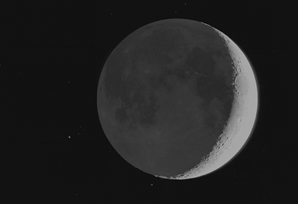
TUSCALOOSA, Ala. – Billed as the “largest science public outreach event ever,” this week’s 100 Hours of Astronomy is expected to prompt more than one million people around the globe to peer at the nighttime sky, including participants at The University of Alabama.
Stargazers in more than 130 countries are expected to attend one or more of the 1,500 events worldwide between April 2-5 as part of the International Year of Astronomy, supported by the International Astronomical Union. This week’s international “star party” will move over the four days and nights as the globe rotates.
At UA’s Gallalee Hall, the events begin Friday, April 3 at 7:30 p.m. as Dr. Dawn Williams, assistant professor of physics and astronomy, presents “IceCube: The Telescope at the South Pole Which Is The Weirdest Wonder of Modern Astronomy.”
This talk, in Gallalee room 227, focuses on a neutrino observatory where a cubic kilometer of ice under the South Pole is equipped with instrumentation to detect subatomic particles that, although invisible, whiz through the human body, and most everything else, by the trillions every second.
At 8 p.m., participants can climb to the Gallalee Hall roof and check out the moon and Saturn through UA’s 16-inch research grade telescope. On Saturday, April 4, the viewing party will continue beginning at 8 p.m. atop Gallalee Hall. Both of the telescope viewings are hosted by Dr. William Keel, professor of astronomy.
For more information on the international event, see http://www.astronomy2009.org/news/pressreleases/detail/iya0908/.
Gallalee Hall is located near the intersection of Hackberry Lane and University Boulevard. For more information about scheduled events, call 205/348-5050 or go online to http://www.astr.ua.edu/Public.html. All sky viewings are contingent upon the weather. Please give advance notice if you plan to bring a large group.
UA’s department of physics and astronomy is part of the College of Arts and Sciences, the University’s largest division and the largest public liberal arts college in Alabama. Students from the College have won numerous national awards including Rhodes Scholarships, Goldwater Scholarships, and memberships on the USA Today All-USA College Academic Team.
Contact
Chris Bryant, Assistant Director of Media Relations, 205/348-8323, cbryant@ur.ua.edu
Source
Dr. William Keel, 205/348-1641, wkeel@bama.ua.edu